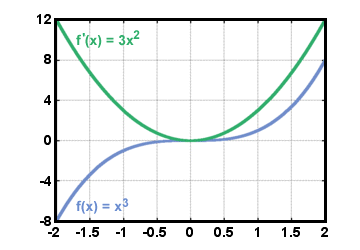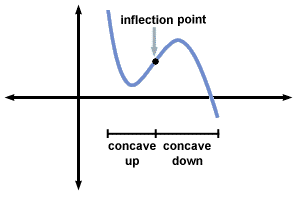Please wait while we process your payment
If you don't see it, please check your spam folder. Sometimes it can end up there.
If you don't see it, please check your spam folder. Sometimes it can end up there.
Please wait while we process your payment
Get instant, ad-free access to our grade-boosting study tools with a 7-day free trial!
Learn more



This site is protected by reCAPTCHA and the Google Privacy Policy and Terms of Service apply.
Create Account
Select Plan
Payment Info
Start 7-Day Free Trial!

Annual
2-49 accounts
$22.49/year + tax
50-99 accounts
$20.99/year + tax
Select Quantity
Price per seat
$29.99 $--.--
Subtotal
$-.--
Want 100 or more? Request a customized plan
You could save over 50%
by choosing an Annual Plan!

SAVE OVER 50%
compared to the monthly price!
| Focused-studying | ||
| PLUS Study Tools | ||
| AP® Test Prep PLUS | ||
| My PLUS Activity | ||
$22.49/month + tax
Save 25%
on 2-49 accounts
$20.99/month + tax
Save 30%
on 50-99 accounts
| Focused-studying | ||
| PLUS Study Tools | ||
| AP® Test Prep PLUS | ||
| My PLUS Activity | ||
No Fear provides access to Shakespeare for students who normally couldn’t (or wouldn’t) read his plays. It’s also a very useful tool when trying to explain Shakespeare’s wordplay!
Erika M.
I tutor high school students in a variety of subjects. Having access to the literature translations helps me to stay informed about the various assignments. Your summaries and translations are invaluable.
Kathy B.
Teaching Shakespeare to today's generation can be challenging. No Fear helps a ton with understanding the crux of the text.
Kay H.
No Fear provides access to Shakespeare for students who normally couldn’t (or wouldn’t) read his plays. It’s also a very useful tool when trying to explain Shakespeare’s wordplay!
Erika M.
I tutor high school students in a variety of subjects. Having access to the literature translations helps me to stay informed about the various assignments. Your summaries and translations are invaluable.
Kathy B.
Teaching Shakespeare to today's generation can be challenging. No Fear helps a ton with understanding the crux of the text.
Kay H.
Create Account
Select Plan
Payment Info
Start 7-Day Free Trial!
You will only be charged after the completion of the 7-day free trial.
If you cancel your account before the free trial is over, you will not be charged.
You will only be charged after the completion of the 7-day free trial. If you cancel your account before the free trial is over, you will not be charged.
Order Summary
Annual
7-day Free Trial
SparkNotes PLUS
$29.99 / year
Annual
Quantity
51
PLUS Group Discount
$29.99 $29.99 / seat
Tax
$0.00
SPARK25
-$1.25
25% Off
Total billed on Nov 7, 2024 after 7-day free trail
$29.99
Total billed
$0.00
Due Today
$0.00
Promo code
This is not a valid promo code
Card Details
By placing your order you agree to our terms of service and privacy policy.
By saving your payment information you allow SparkNotes to charge you for future payments in accordance with their terms.
Powered by stripe
Legal
Google pay.......



Please wait while we process your payment

Sorry, you must enter a valid email address
By entering an email, you agree to our privacy policy.
Please wait while we process your payment

Sorry, you must enter a valid email address
By entering an email, you agree to our privacy policy.
Please wait while we process your payment

Your PLUS subscription has expired
Please wait while we process your payment
Please wait while we process your payment

Analysis of Graphs

Once we have found the critical points, one way to determine if they are local minima or maxima is to apply the first derivative test. Another way uses the second derivative of f. Suppose x0 is a critical point of the function f (x), that is, f'(x0) = 0. We have the following three cases:
The first and second derivative tests employ essentially the same logic, examining what happens to the derivative f'(x) near a critical point x0. The first derivative test says that maxima and minima correspond to f' crossing zero from one direction or the other, which is indicated by the sign of f' near x0. The second derivative test is just the observation that the same information is encoded in the slope of the tangent line to f'(x) at x0.
A function f (x) is called concave up at x0 if f''(x0) > 0, and concave down if f''(x0) < 0. Graphically, this represents which way the graph of f is "turning" near x0. A function that is concave up at x0 lies above its tangent line in a small interval around x0 (touching but not crossing at x0). Similarly, a function that is concave down at x0 lies below its tangent line near x0.
The remaining case is a point x0 where f''(x0) = 0, which is called an inflection point. At such a point the function f holds closer to its tangent line than elsewhere, since the second derivative represents the rate at which the function turns away from the tangent line. Put another way, a function usually has the same value and derivative as its tangent line at the point of tangency; at an inflection point, the second derivatives of the function and its tangent line also agree. Of course, the second derivative of the tangent line function is always zero, so this statement is just that f''(x0) = 0.
Inflection points are the critical points of the first derivative f'(x). At an inflection point, a function may change from being concave up to concave down (or the other way around), or momentarily "straighten out" while having the same concavity to either side. These three cases correspond, respectively, to the inflection point x0 being a local maximum or local minimum of f'(x), or neither.

Please wait while we process your payment





